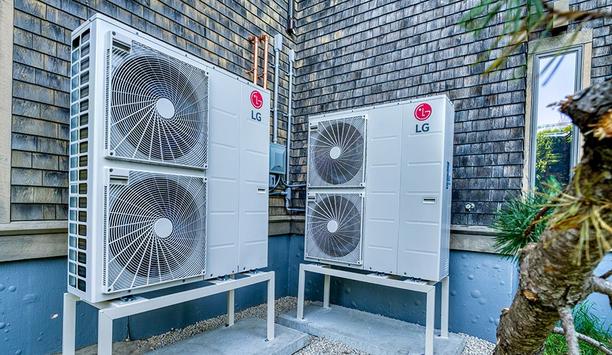Choosing the right air conditioning system for the home or office can be tricky. With numerous options available in the market, it’s always important to understand the differences between the two most popular choices: ductless split systems and central air conditioning.
Below, Aust Climate provides a comprehensive comparison, discussing how each system works, the pros and cons, and the ideal use cases for both.
What Are Ductless Split Systems?
Ductless split systems, also commonly referred to as mini-splits, eliminate the need for extensive ductwork and dramatically simplify the installation process.
There are two parts to any refrigerated air conditioner; the outdoor and indoor unit. In the outdoor unit, the refrigerant then enters the compressor as a low-pressure, superheated gas.
High-pressure liquid
If the user ever stands near an outdoor unit while it’s operating, the user’ll feel a lot of hot air
The compressor sends the gas toward the condenser, where it is cooled and condensed, turning into a cool, high-pressure liquid.
This process produces hot air, which the condenser blows away with a fan. This is why, if the user ever stands near an outdoor unit while it’s operating, the user’ll feel a lot of hot air being blown out.
Superheated low-pressure gas
Returning inside, the cold refrigerant enters the evaporator, where two things happen. First, it absorbs heat from the space being cooled. This causes the refrigerant to boil, which turns it back into a superheated low-pressure gas.
This process allows it to produce cool air, which the air conditioner’s indoor unit blows into the room. Finally, the gas enters the compressor and the cycle starts over.
Cool, compress, condense, evaporate, and distribute
Despite the technical jargon, the concept is fairly straightforward: cool, compress, condense, evaporate, and distribute. It’s this cycle that keeps the indoor environment comfortable, regardless of the scorching heat outside.
Ductless split systems differ from other air conditioning options through their unique design and functionality. Unlike traditional HVAC systems that rely on a network of ducts to distribute conditioned air throughout a building, ductless split systems operate on a more localized level.
The Advantages of Ductless Split Systems
Easy Installation
Their design eliminates the need for ductwork, making the installation process significantly less difficult
When it comes to cost-effectiveness and efficiency, ductless split systems stand out, especially in terms of regulating the temperature of offices or single rooms.
Their design eliminates the need for ductwork, making the installation process significantly less difficult and costly than central air conditioning systems. This advantage extends beyond the installation phase, as maintenance and repair costs are also minimized due to the lack of ductwork.
Quiet
These systems, widely known for their quiet operation, contribute to a serene and comfortable environment ideal for office spaces.
They also operate much more quietly than central air conditioning systems, sparing users from the constant hum that could otherwise disrupt peace and concentration.
Energy Efficient
Energy efficiency is another compelling advantage of ductless split systems. They directly cool or heat the room they are installed in, reducing energy waste associated with circulating air through ducts.
This direct approach makes them more energy-efficient and allows for individual room control. This way, users can easily adjust the temperature in each of the rooms that are equipped with a unit.
The Limitations of Ductless Split Systems
Less Effective in Large Spaces
Because these systems work on a room-to-room basis, each indoor unit primarily serves a single-room
A key drawback is that they are less suitable for cooling large spaces or entire homes. The reason? Because these systems work on a room-to-room basis, each indoor unit primarily serves a single room or individual area.
If user’re looking to maintain uniform temperature across a larger home, a ductless split system might not be the most efficient choice. This could be a significant factor for homeowners with larger square footage or businesses with expansive commercial spaces.
No Zoning
Unlike central air conditioning systems, which allow users to control the temperature independently in different areas of the home, ductless systems lack this level of versatility.
This means that users can’t simultaneously set varying temperatures in different rooms, which could be a downside users prefer differentiated climate control for different spaces.
More Obtrusive
Aesthetic considerations also come into play with ductless split systems. These units are typically mounted on walls or ceilings, making them more noticeable than the discreet vents of central air conditioning systems.
This could be a deterrent for anyone who prefers a more streamlined look or those who are more conscious about the interior design of their spaces.
No Air Filtration
The lower filtration efficiency of ductless split systems could be a significant disadvantage
Lastly, an important aspect to consider is the level of air filtration offered by these systems. Compared to ducted systems, ductless split systems tend to offer less effective filtration.
This could be problematic for individuals with allergies, asthma, or other respiratory conditions. Clean, filtered air is essential for maintaining a healthy indoor environment, and if this is a priority user, the lower filtration efficiency of ductless split systems could be a significant disadvantage.
Best Applications for Ductless Split Systems
Whether user’re looking to make the garage, basement, or attic living space comfortable year-round, a ductless split system can be the answer. These areas often don’t have access to the home’s existing ductwork, making a central air system an impractical choice.
The good news is, that ductless split systems don’t require a network of ducts to deliver hot or cold air, which makes them a flexible and adaptable solution for these types of spaces.
Mini-split system comes
If user’re dealing with the unique challenge of cooling or heating an extension to the home, this is where a mini-split system comes into its own.
Home additions often lack the ductwork needed for a central air system, and installing new ductwork can be costly and disruptive. On the other hand, a ductless split system sidesteps this issue entirely, offering a cost-effective and efficient solution that can be installed with minimal disruption.
Climate control challenges
Retrofitting an older home with ductwork is not only expensive but can also damage the home’s historic features
Older homes often present unique challenges when it comes to climate control. These houses were typically built before modern air conditioning systems were commonplace, meaning lacked lack the necessary ductwork.
Retrofitting an older home with ductwork is not only expensive but can also damage the home’s historic features. In these situations, a ductless split system is a modern alternative that can be added without compromising the home’s architectural integrity.
What Are Central Air Conditioning Systems?
The cooling process works the same as for the split system, but the difference is that instead of being sent directly into one room, the cooled air is distributed through a system of ductwork in the building’s roof. This means that instead of covering just one room, a central air conditioning system can cool an entire home.
How does the system know when to start or stop? That’s where the thermostat comes in. It senses the home’s temperature and communicates with the central air conditioning system to maintain the chosen temperature. It’s an integral part of the system, providing users with the control to set the ideal climate.
The Benefits of Central Air Conditioning Systems
Whole-home Cooling
Central air conditioners have a broader reach than ductless split systems, which are confined to cooling-specific zones. They operate using a single outdoor unit, significantly reducing maintenance needs and machinery outdoors.
This attribute makes them particularly suitable for large homes or office spaces where maintaining a consistent temperature is critical.
Zoning Abilities
Such flexibility in temperature control is not only convenient but also contributes to energy efficiency
Homeowners can easily regulate the temperature in different areas or zones within their homes independently with central air conditioning. This means the user can set the bedroom to be cooler than the living room, or vice versa.
Such flexibility in temperature control is not only convenient but also contributes to energy efficiency, as users are not cooling rooms that don’t need it.
Energy Efficiency
Speaking of energy efficiency, central air conditioning systems also edge out their ductless counterparts in this regard. For larger homes or multiple rooms, they consume less power per unit of cooling, which translates to significant energy savings in the long run.
This is an important consideration for any household or business aiming for sustainability and cost-effectiveness, especially given the current cost-of-living crisis.
Aesthetically Appealing
Central air conditioning systems have a more streamlined look than ductless split systems.
Their vents are usually small and are installed in the ceiling, making them less intrusive. This, therefore, is a crucial advantage for anyone who values aesthetics and interior design.
Filtration
It efficiently filters out dust, allergens, and other airborne particles, promoting better air quality
Filtration is a function that can be added to the central air conditioning. This ensures that the air circulating in the home is not just cool but also clean.
It efficiently filters out dust, allergens, and other airborne particles, promoting better air quality. This can be particularly beneficial for individuals with allergies or respiratory conditions, contributing to healthier living spaces.
The Limitations of Central Air Conditioning Systems
Higher Installation Costs
When installing central air conditioners, the cost isn’t limited to the price of the unit itself. The installation of ductwork significantly increases the total expense. This process involves the installation of a complex network of ducts throughout the home, which is required to enable the proper distribution of cool air.
This is also a labor-intensive process that requires the expertise of skilled professionals, and the cost of the ductwork can often exceed the price of the unit itself. Of course, if the user already has ductwork that needs a new outdoor unit, then this reduces the cost and effort significantly.
Higher Maintenance Requirements
Regular upkeep is necessary to preserve the longevity and efficiency of the system.
Some aspects can be done by homeowners, such as cleaning filters, but inspecting and cleaning the ductwork often requires the help of an air conditioning professional.
Potential Air Leakage
The potential for air leakage is another drawback to consider. If the ductwork isn’t properly sealed, the cooled air can leak, resulting in energy wastage. This not only reduces the efficiency of the system but can also lead to increased energy bills.
Furthermore, poorly sealed ducts can also allow humidity and outdoor pollutants to enter the home. In turn, this can decrease the indoor air quality.
Best Applications for Central Air Conditioning Systems
For homes with existing ductwork, central air conditioning can be a more cost-effective option
Central air conditioning systems are the ideal choice for larger homes, homes that require zoning, or homes with pre-existing ductwork that can be extended. However, the reasons behind this go beyond just the size of the property or its current ductwork configuration.
For homes with existing ductwork, central air conditioning can be a more cost-effective option. The initial installation cost of a central air conditioning system may seem high, but keep in mind that this includes the cost of installing ductwork. If the home already has ductwork in place, it can often be expanded to accommodate the central air conditioning system, thereby reducing the overall burden of installation costs.
Get Heating and Cooling Advice From Melbourne’s Best
Choosing between a ductless split system and central air conditioning ultimately depends on the specific needs and circumstances. Both systems have their strengths and weaknesses, and understanding these can help users make a well-informed decision.
If users need professional advice on the best air conditioning system for the space, don’t hesitate to contact Australian Climate Systems. It has over 25 years of experience in installing both split systems and ducted air conditioning, so it understands the limitations and benefits of each system and can help users choose the ideal one for their needs.















